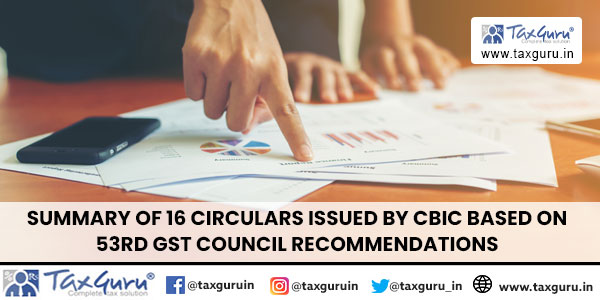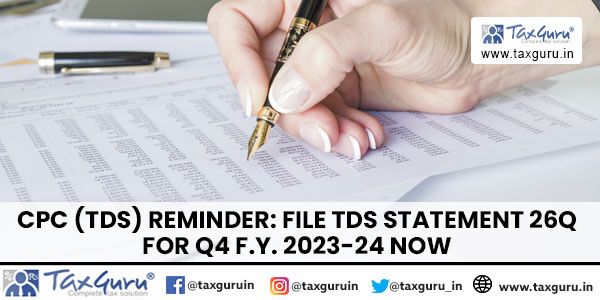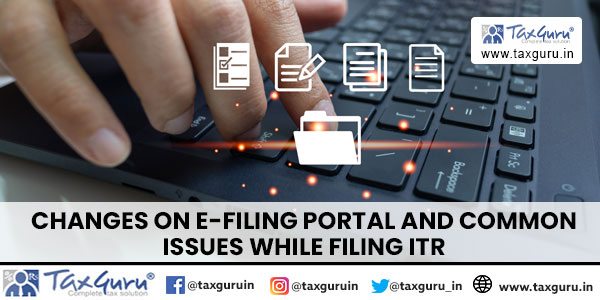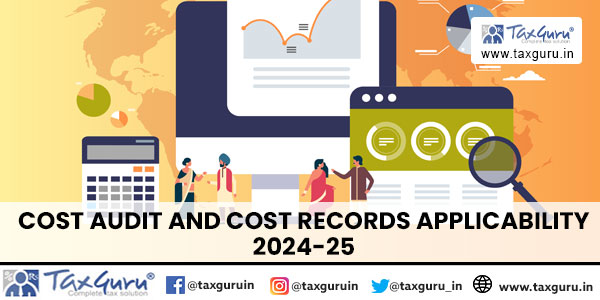Export under GST
Definition of Export under GST:
Under GST, the term “Export” refers to the supply of goods or services that are sent outside the territory of India. This means that any supply of goods or services that leaves India’s boundaries can be considered an export.
There are three different types of exports that are recognized under GST:
Zero-rated exports: These are exports in which the supplier is not required to pay any tax on the supply of goods or services. Instead, the supplier is eligible for a refund of any tax that has been paid on inputs used in the production of the exported goods or services. This is intended to ensure that exports are not subject to double taxation.
Deemed exports: These are supplies of goods that do not leave India but are deemed to be exports because they are supplied to a person who is located in a Special Economic Zone (SEZ) or a supplier who is eligible for a refund of GST. Examples of deemed exports include supplies made to manufacturers who produce goods for export or supplies made to EOU (Export Oriented Unit) units.
Physical exports: These are exports in which the goods or services physically cross the border and are delivered to a customer outside India. In this case, the supplier is required to comply with all the relevant export regulations and procedures.
Export Procedure:
The procedure for exporting goods or services under GST involves the following steps:
> Obtain a valid GST registration: The exporter must obtain a valid GST registration by registering with the GST portal. This registration is mandatory for all exporters, regardless of the value of goods or services being exported.
> File a shipping bill: The exporter must file a shipping bill with the customs authorities. This shipping bill is a document that contains details of the goods being exported, the destination country, and the port of discharge. The exporter must ensure that the shipping bill is filled out accurately and in compliance with all the relevant regulations.
> Declare the exports in the GST returns: The exporter must declare the exports in the GST returns by filing the GSTR-1 form. The exporter must provide details of the exports, such as the invoice number, the value of the goods or services exported, and the destination country. This information is used to process the refund of the Integrated Goods and Services Tax (IGST) paid on the exports.
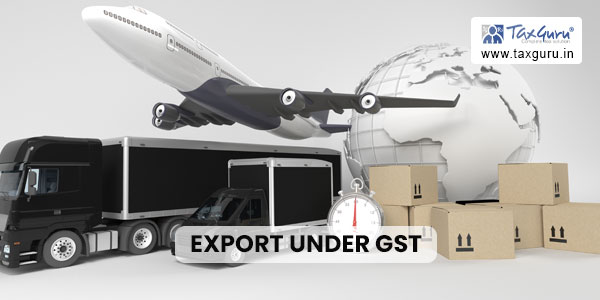
> Pay the IGST and claim a refund: The exporter must pay the IGST on the exports and then claim a refund of this tax paid. This can be done by filing the GSTR-3B form or the RFD-01A form. The exporter must ensure that all the relevant documents, such as the shipping bill and the invoice, are submitted along with the refund application.
> E-way bill: The exporter must generate an e-way bill for the consignment of goods being exported. This is a document that contains details of the goods being transported, such as the quantity, value, and destination. The e-way bill can be generated through the GST portal or through a mobile app.
The electronic export procedure has been introduced to simplify the process of exporting goods or services under GST. This procedure allows exporters to file all the necessary forms and documents electronically through the GST portal, which reduces the time and effort required to complete the export process. The electronic export procedure includes the filing of the GSTR-1 form, the generation of e-way bills, and the claiming of GST refunds.
GST Refund for Exports
Under GST, exporters can claim a refund of the GST paid on the goods or services exported. The procedure for claiming GST refunds for exports involves the following steps:
> File the GSTR-1 form: The exporter must file the GSTR-1 form to declare the exports made during the tax period. This form should contain details such as the invoice number, the value of goods or services exported, and the destination country.
> File the GSTR-3B form: The exporter must file the GSTR-3B form to pay the tax on the exports made during the tax period. The IGST paid on the exports will be available as input tax credit for the exporter.
> File the shipping bill: The exporter must file the shipping bill with the customs authorities. This document contains details such as the description of goods, their value, and the destination country.
> File the refund application: The exporter must file the refund application in Form RFD-01 within two years from the relevant date. The relevant date is the date on which the shipping bill was filed with the customs authorities. The refund application should contain details such as the invoice number, the shipping bill number, and the amount of refund claimed.
> Submit the required documents: The exporter must submit the required documents along with the refund application. These documents may include the copy of the shipping bill, the invoice, and the GSTR-3B form.
> Processing of refund: The refund application will be processed by the GST authorities within 60 days from the date of receipt of the application. If any discrepancies are found, the exporter will be notified, and the refund may be delayed.
Export Incentives
Under GST, there are several export incentives available to promote exports and make Indian goods and services more competitive in the global market. Some of these incentives include:
> Refund of Integrated Goods and Services Tax (IGST) paid on exports: Exporters can claim a refund of the IGST paid on the exports of goods or services. This refund is available in cases where the exports are made on payment of IGST or where the exports are made under bond or letter of undertaking (LUT) without payment of IGST.
> Duty drawback scheme: Under this scheme, exporters can claim a refund of the duties paid on the inputs used in the production of the exported goods. This scheme is available for both the central and state taxes paid on the inputs used in the production of the exported goods.
> Export promotion capital goods (EPCG) scheme: This scheme allows exporters to import capital goods at a concessional customs duty rate, subject to certain conditions. The imported capital goods are required to be used for the production of goods for export.
> Special Economic Zones (SEZs): SEZs are designated areas where exports are encouraged through various incentives such as exemption from taxes and duties, and simplified procedures for imports and exports.
> GST exemption on certain export-related services: Certain export-related services such as transportation of goods, freight forwarding, and terminal handling are exempted from GST.
In addition to the above incentives, the government has also introduced schemes such as the Merchandise Exports from India Scheme (MEIS) and the Service Exports from India Scheme (SEIS) to promote exports. These schemes provide incentives in the form of duty credit scrips or refund of taxes paid on certain goods or services.
Compliance under GST for Exporters
Exporters are required to comply with certain GST regulations to ensure that they meet their tax obligations and avoid penalties for non-compliance. Some of the compliance requirements for exporters under GST are:
> Filing of GST returns: Exporters are required to file their GST returns on time. The GSTR-1 form must be filed to declare the exports made during the tax period, and the GSTR-3B form must be filed to pay the tax on the exports made during the tax period. Failure to file the returns on time can result in penalties and interest charges.
> Maintenance of proper records: Exporters must maintain proper records of their exports, including details such as the invoice number, the value of goods or services exported, and the destination country. This will help them in filing their GST returns and claiming refunds.
> Compliance with export procedures: Exporters must comply with the export procedures laid down by the customs authorities, such as filing the shipping bill and obtaining the necessary export licenses. Failure to comply with these procedures can result in penalties and delays in the export process.
> Reconciliation of data: Exporters must reconcile the data in their GST returns with the data in their shipping bills and other export-related documents. This will help them in identifying any discrepancies and taking corrective action to avoid penalties.
> Penalties for non-compliance can range from a monetary penalty to cancellation of GST registration. Exporters can take the following steps to ensure that they are meeting their compliance obligations:
> Regular monitoring: Exporters must regularly monitor their compliance with GST regulations, including filing of returns and maintenance of records.
> Training and awareness: Exporters must train their employees on GST regulations and ensure that they are aware of their compliance obligations.
> Use of technology: Exporters can use technology such as GST compliance software to ensure that they are meeting their compliance obligations and to avoid errors in their GST returns.
In conclusion, exporters must ensure compliance with GST regulations to avoid penalties and delays in their export process. This requires regular monitoring, training, and use of technology to meet their compliance obligations.
Impact of GST on Export:
The introduction of GST has had a significant impact on the export sector in India. While there have been some challenges, overall, the new tax regime has had a positive impact on the export sector. Some of the benefits and challenges of GST on exports are:
> Benefits:
> Uniform tax structure: With the introduction of GST, a uniform tax structure was established across the country. This has helped in reducing the compliance burden for exporters who had to deal with different tax structures in different states.
> Reduced transaction costs: GST has reduced the transaction costs for exporters by eliminating the cascading effect of taxes. Earlier, taxes were levied at every stage of the supply chain, which increased the cost of production. GST has brought down these costs by allowing input tax credits.
> Simplified export procedures: The introduction of GST has simplified the export procedures by integrating various taxes such as Central Excise, Service Tax, and VAT into one single tax. This has helped in reducing the time and cost of export procedures.
> Boost to competitiveness: The implementation of GST has made Indian goods and services more competitive in the global market by reducing the cost of production and making them more price-competitive.
> Challenges:
> Refunds: The process of claiming refunds under GST can be complex and time-consuming, leading to cash flow problems for exporters. This has been a major challenge for the export sector.
> Compliance: Compliance with GST regulations can be a challenge for small and medium-sized exporters who may not have the resources to hire professionals for compliance-related activities.
> Delay in refund processing: There have been delays in the processing of refunds, leading to cash flow problems for exporters. This has been a major challenge for the export sector.
> Complex classification: The classification of goods and services under GST can be complex, leading to confusion and challenges for exporters.
Penalties for non-compliance
> Late filing of returns: A penalty of Rs. 100 per day for each day of delay subject to a maximum of Rs. 5,000 will be levied on the exporter who fails to file returns on time.
> Incorrect or false information: A penalty of up to 100% of the tax amount can be levied if an exporter provides incorrect or false information.
> Failure to register: An exporter who is required to register under GST but fails to do so can be penalized with a penalty equal to 10% of the tax amount, subject to a minimum of Rs. 10,000.
> Failure to pay tax: An exporter who fails to pay tax can be penalized with a penalty equal to 10% of the tax amount, subject to a minimum of Rs. 10,000.
Prosecution for non-compliance
> In addition to penalties, non-compliance with export regulations under GST can also lead to prosecution. The following are the situations that can lead to prosecution:
> Wilful attempt to evade tax: An exporter who makes a wilful attempt to evade tax can be prosecuted under GST. This can result in imprisonment of up to five years and a fine.
> Fraud: An exporter who commits fraud can be prosecuted under GST. This can result in imprisonment of up to five years and a fine.
> Obstructing an officer: An exporter who obstructs an officer during the course of an investigation can be prosecuted under GST. This can result in imprisonment of up to six months and a fine.
Conclusion:
The introduction of GST has had a positive impact on the export sector in India. The benefits of a uniform tax structure, reduced transaction costs, simplified export procedures, and improved competitiveness have far outweighed the challenges faced by exporters. The government has also taken steps to address the challenges faced by exporters, such as simplifying the refund process and improving the compliance framework.

















